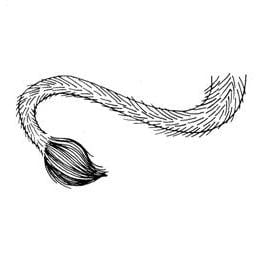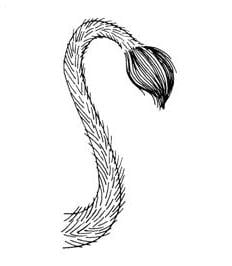The mythology of time travel is extensive and far reaching. While the idea of an actual “time machine” wasn’t conceived until the late 1800’s, you can find legends and stories that features a hero traveling to the past or future in a magical, fantastical way. I thought I would share with you one of those stories that we’ll be touching upon in the documentary.
One of the very first time travel stories that have been recorded in history appears in the Hindu epic, Mahabharata– speculated to be written as early as 400BC. The story follows a king, his daughter, and their search for a perfect suitor.
Revati was the only daughter of King Kakudmi, a powerful monarch who ruled Kusasthali, a prosperous and advanced kingdom under the sea. Thinking no one could prove to be good enough to marry his beautiful daughter, Kakudmi took Revati with him to Brahmaloka, the home of Brahma, to ask the god’s advice about finding a suitable husband for her.
Brahma was listening to a musical performance when they arrived, and so they waited patiently until the performance was finished. Finally, King Kakudmi humbly bowed and made his request:
“O Brahmâ! To whom shall I betroth this daughter? I have come to you to ask on this point I have searched for many princes and seen also a good many of them and none of them is to my liking and so my mind is not at rest.”
Brahma laughed at the foolishness of the King.
“O King! The princes that you thought would become the bridegroom of your daughter, all died; their sons and grandsons and their friends even have all passed away.”
Time, Brahma goes on to explain, runs differently on different planes of existence. During the time they had waited in Brahmaloka to see him, 27 chatur-yugas, had passed on Earth. Everything that Kakudmi had and owned, his friends and family, his sons and wife, his armies and treasures, had vanished with the time that had passed. The King and his daughter were overcome with astonishment and grief for everything they had lost, but Brahma comforted them, and recommended a worthy husband currently on earth: Balarama, the twin brother of Krishna.
What is really interesting though, is how similar their view of time was 2500 years ago to how physicists and astronomers conceptualize space-time today. In Einstein’s theory of relativity, time is relative to the observer’s frame of reference- it depends on the observer’s motion and strength of gravity. For instance, one could argue that time here on earth runs slower than in space because gravity slows the passage of time.
Hindu philosophy was familiar with the concept that time is relative and many passages on the Vedic scriptures continuously point out that the cosmic time of the gods is different than the time on earth.
One Chatur-Yuga is equivalent to 4,320,000 human years.
Were King Kakudmi and his daughter two unwitting time
travelers? What they thought were just minutes in front god Brahma, millennia
had taken place at home. When they came back, they did so to a vastly different
place.
Today, we so often think of time as an arrow moving in one direction, with a beginning, middle and end. But I think it is interesting to look at different cultures and how they view time. Their perceptions help us look at time, and the idea of time travel, a little bit differently

